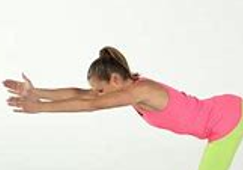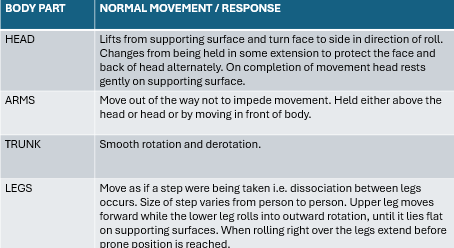Functional Movement Analysis flashcards
1/25
There's no tags or description
Looks like no tags are added yet.
Name | Mastery | Learn | Test | Matching | Spaced |
|---|
No study sessions yet.
26 Terms
What is movement analysis?
The systematic process of observing and analysing the quality of a movement as it relates to a functional movement
Why do physiotherapists analyse movement
to identify movement dysfunction (which either contributed to an injury or developed because of injury)
Helps us understand the reasons behind how and why people move a certain way.
to make movement system diagnoses that support treatment decisions
What is a functional movement?
Can be task specific (e.g. tying shoes) or sport specific movement (e.g. throwing a cricket ball)
Can be broken down into subtasks, phases and components
Difficulty with any of the components required for a specific functional movement can make tasks very difficult
In other words, functional movements are the things you do during your day to help you accomplish essential tasks
What are the advantages of using observational movement analysis
Practical
always available
quick
cheap
What are the disadvantages of observational movement analysis
Not precise
subjective )based on personal factors)
requires repeated performance
Movement components
Components (give a description)
Part of body that initiates movement
joints involved
direction body moves
weight shift
Extended arm reach:
•The movement is initiated by the hand
•The shoulder joint acts as a fulcrum
• Direction is forward
• Weight is shifted forward.

Framework for movement analysis
Starting position:
Position of readiness
foundation of activity
Joint position and muscle work must be considered
e.g.: lying, kneeling, sitting, standing
Movement Sequence (timing and order):
Different types of movement sequences:
transitional movement sequences (e.g. sitting to standing) (initiation → transition → completion)
Initiation: forward movement of trunk + arms
Transition: shift weight from pelvis + hips to feet, moving from sitting to standing
Completion: standing, trunk balanced over feet
mobility sequences (e.g. walking and crawling)
task related movement sequences (e.g. drinking from a cup)
Finishing position:
Returning to the original position
Beginning of a new phase
Starting position for a new movement
A position of rest.
Rolling from supine and prone (body parts and movement of each)

Sitting to standing (body parts and movement of each)

Going up and down stairs

Trunk control
Trunk control is the ability of the trunk muscles to:
Allow the body to remain upright,
Adjust weight shifts
Perform selective movements of the trunk
Maintains the base of support during postural adjustments
How does trunk control fulfil its role
All movements of the trunk require muscle activity to oppose the pull of gravity.
The moment the body moves away from COG, the muscles have to act.
Trunk control is needed to maintain balance + moving extremities
Static control during functional movement
S.C. enables the body to maintain a certain posture
The postural role of the trunk is most significant in sitting and standing.
little muscle activity is needed to maintain posture
Dynamic control during functional movement
Trunk functions dynamically when moving centre of mass over base or to new base
allows movement in and out of a position.
When trunk is unstable + cant move w/o losing balance → arms and legs stabilise → therefore increase base of support
Equilibrium reactions
When position changed:
trunk muscles strongly contract
extremities bring COG back to stable support
Arm muscles → provides additional stability to the upper trunk
EQ reactions = not present in normal functional movements → is a backup system when balance is disturbed
Happens when:
normal postural adjustments + weight shift cant maintain posture
small BOS + environment conditions that destabilise the body
When describing a movement, comment on:
NB: Start at the head/neck and work your way down!!
Joint movements (range)
Muscle action
Joint ROM
Movement quality (e.g. smooth, coordinated)
How to analyse using the S.I.T.C framework
TAKE NOTE OF:
S = starting position
Base of support
Any asymmetries in weight distribution
Postural deviations
Obvious differences between the two sides of the body
I = Initiation
Which body part moves first?
Direction of movement
Any changes in the base of support
Any weight shift
T = transition
Position of the body
Base of support
New direction of movement
C = completion
Position of body and limbs
Base of support
Movement needed to memorise
Sit to stand
Stepping up
Stepping down
Rolling supine to side lying
2 main phases of STS
the raising phase, during which the person must move from sitting to upright posture
the stabilisation phase, during which the person achieves the steady standing posture necessary for the performance of other tasks
Why is sit to stand considered a complex movement?
Needs trunk and lower limb coordination, balance, and stability + neurocognitive skills and muscular strength.
Sit-to-stand action
Consists of 3 phases:
Flexion momentum phase
Flex hips
trunk forward
anterior pelvic tilt
trunk extension
Momentum transfer phase
transfer weight from bum to feet
leg extensors contract
COM moves forward
dorsiflexion at ankle increases
Extension phase
hips and knees extend → body erect
COM controlled to maintain balance
Stepping up action
Consists of 4 phases:
Preparatory phase
Analyse height + position of step (get visual info)
Weight transference onto stance leg
COM moves lateral + backward anticipating forward movement of LL
Muscles in stance leg stiffen to support body weight.
Swing phase
The hip and knee of the LL flex to lift foot onto the step.
Plantar-flexors contract allowing heel of LL lift off ground.
Hip flexors contract to lift leg off the ground.
The knee extends to move the foot over the step (hover) for accurate foot placement.
Stance phase + Lifting the trailing leg onto the step
Foot placed on step
body weight transfers forward onto LL
Isometric contraction of hip flexors + knee flexors
The trailing leg lifted up + forward by hip, knee and ankle flexion.
Redistribution of weight onto both feet (extension + completion)
Lateral shift of COM redistributes the weight equally over both feet
The foot of trailing leg is lowered onto the step.
Stepping down action
Consists of 4 phases:
Preparatory phase
Weight shift onto stance leg
Co-contraction in the stance leg
LL relaxed and ready to swing forward
Swing phase — Leading leg
Lift LL up to pass edge of step (hip + knee flexion)
LL moves forward w/ hip flexion + knee extension
LL touch down in plantarflexion
COM moves forward + down → transferring weight onto the leading leg
Flexion at knee absorbs momentum
Extend hip + knee
Stance phase (of LL) + trailing leg lowering & COM
The stance knee continues to flex
The heel of TL is lifted off the supporting surface
The wight is shifted onto the forefoot
The centre of motion is moving forwards and downwards. The knee is slightly flexed with the foot on plantarflexion.
Continuous flexion of the trailing leg to lower the centre of motion in a controlled way.
Trailing leg swing phase (Redistribution of weight onto both feet (completion))
Weight on LL as COM continues moving forward
LL then extends
TL hip flexes → brings boot in line with LL (stance leg) → foot lowered to ground
Rolling: Initiated from upper body (Rolling from supine to right side)
Initial phase:
Head + upper body move up off surface, diagonal to the right
head, left shoulder + upper rib cage moves off and away from surface → causing them to be anterior to the left pelvis.
Transition:
Left pelvis rotates to the right and leaves supporting surface so the body weight shifts to the right
left arm crosses midline to assist trunk flexion.
Completion:
left leg leaves surface and rests on right leg
when pelvis and body are in side-lying position, spine will have moved out of flexion rotation into neutral
Rolling: Initiated from lower body (rolling form supine to right side)
Initiation:
Lower trunk + pelvis lift off surface and move towards the right
left pelvis moves anterior to left shoulder
left hip + knee is flexed to assist extension rotation of trunk as foot pushes into supporting surface
head + upper body remain on supporting surface
Transition:
Rotation moves up spine and left upper body rotates to the right + leaves surface → full body weight shifted onto right pelvis/hip/shoulder
Completion:
Upper body rotate into plane of pelvis and side-lying is achieved
Nonsegmental (log) rolling
Left shoulder and left pelvis remain aligned in the same plane and the whole trunk moves together as a unit.
Initiation:
Upper and lower trunk are in neutral alignment as movement is initiated so that the head, shoulders + pelvis leave the bed at the same time
Rolling can start either with the whole body moving together or with just the head, neck, and trunk moving first, using the arms and legs very little.
Transition:
Body weight is shifted from the back onto the right shoulder and hip as the pelvis and shoulder leave the surface
Completion:
Pelvis and shoulder reach side-lying position at the same time